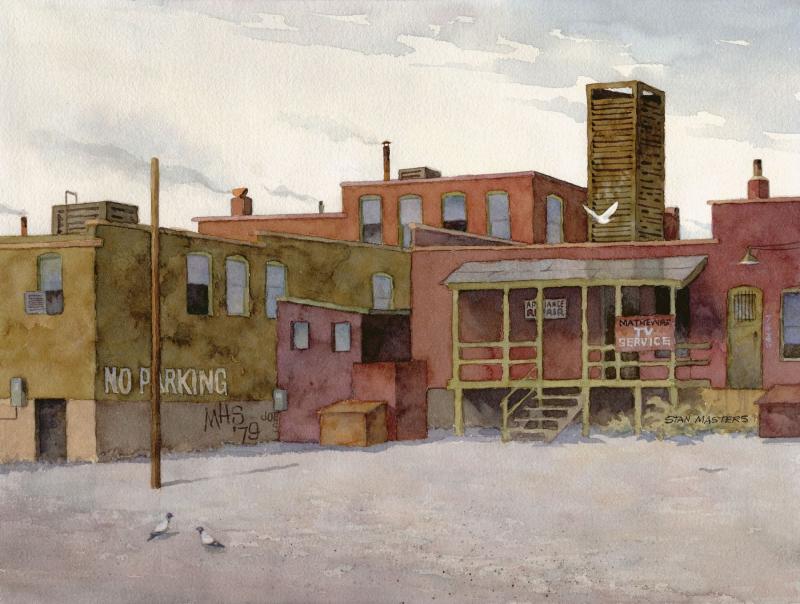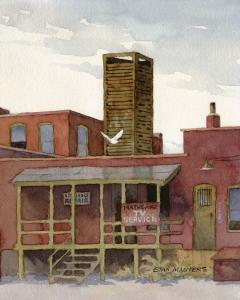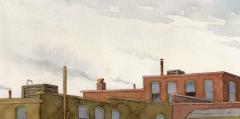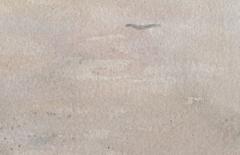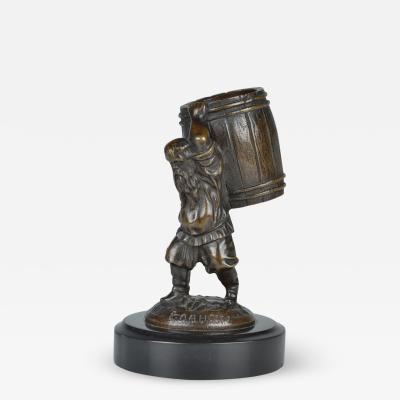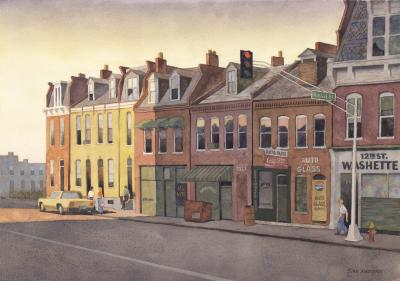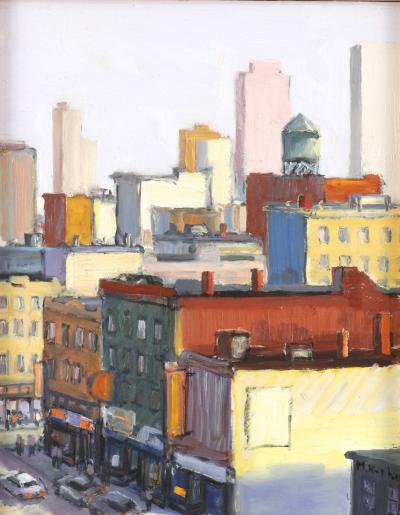Listings / Fine Art / Paintings / City Scene
East Wind
-
Description
Masters finds order and structure in this gritty view. The geometric shapes of the buildings, windows and chimneys play off each other until the eye is slowed by the tight green lattice of the porch, where we discover the TV SERVICE sign. The enigmatic pole makes another appearance, this time standing forward of the buildings, leading the eye to the pigeons, while its shadow points back to the porch. The open spaces of the sky and parking lot relive the clutter, preventing the architecture from overwhelming the picture. The pigeon in flight breathes further life into the scene while the wisps of smoke confirm the viability of the businesses within. The MHS ’79 graffito below the NO PARKING sign, written by a graduating senior at Maplewood High School, might also double as the date of the painting: Masters signed it straight across the parking lot in the weeds near the porch.
___________________
Stan Masters (1922-2005)
In 1971, after 20 years in commercial art, Stan Masters began his career as a watercolor artist. Following a brief period of experimentation, he adopted the American Realist tradition of Winslow Homer, Edward Hopper and Andrew Wyeth. “I believe that art is, or should be, a form of communication”, he wrote in his artist’s statement. “It ought to be understandable. For that reason, I choose to work in a realistic manner. My subject matter deals with things I know about or places I’ve been”.
Humble beginnings inform his gorgeous watercolors: he grew up in a one room railroad shanty with neither water nor electricity where the tracks passed within six feet of the front porch. Thus, his subject matter depicts small town and rural America. And, of course, the railroad.
In a review of a 1978 solo exhibit a critic proclaimed, “A Stan Masters watercolor is realism at its best. What [Masters] sees is so direct and the way he sees it is so logical that his intent and his achievement are timeless and universal. We find in his paintings unsuspected technical brilliance, always purposely hidden so as not to intrude on the overall effect he wants to create.”
Despite participation in numerous competitions and exhibitions with similar rave reviews, sales throughout his career remained minimal. He died in 2005, all but forgotten. Today, Masters is finally receiving the attention he deserves, and his paintings now hang in two museums and numerous private and corporate collections. -
More Information
Documentation: Signed Notes: Signed lower right Origin: United States, Missouri Period: 1950-1979 Materials: Watercolor on paper Condition: Good. Strong colors, never framed. Creation Date: 1979 Styles / Movements: Other Dealer Reference #: SM405 Incollect Reference #: 370699 -
Dimensions
W. 16.25 in; H. 12.25 in; W. 41.28 cm; H. 31.12 cm;
Message from Seller:
Robert Morrissey Antiques & Fine Art, established in 1948, specializes in period European furniture, modern design, and an extensive selection of paintings and sculpture. Contact us at 314.644.7066 or robert@robertmorrissey.com to explore our curated collection.















